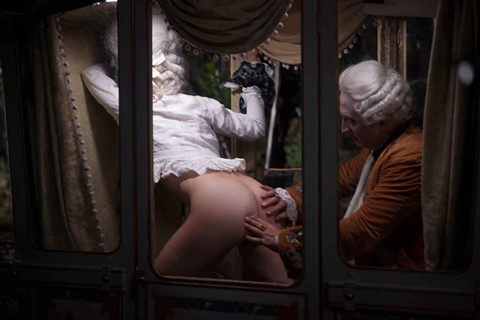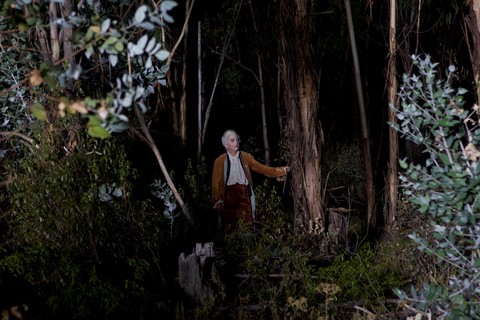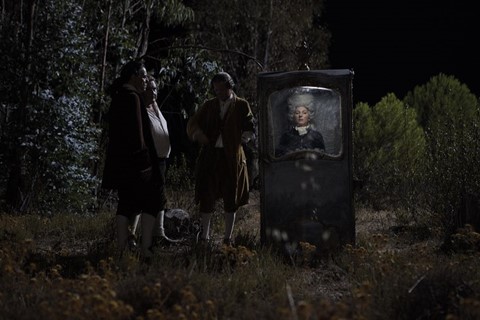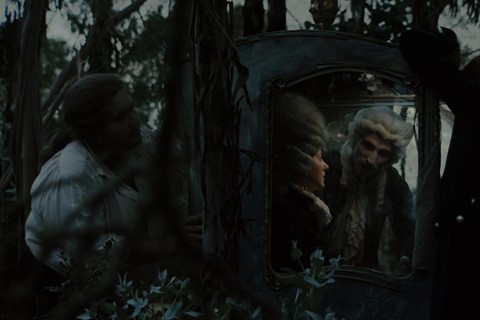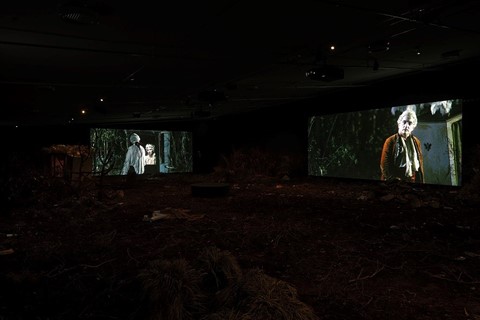As the director’s controversial film about cruising French aristocrats is reimagined as an immersive show in Amsterdam, he talks about the liberatory power of darkness and the necessary dangers of intimacy
Albert Serra’s 2019 film Liberté opens with a meeting between a group of exiled French aristocrats and a German nobleman (played by the late Helmut Berger). The rendezvous takes place in a gloomy forest turned 18th-century cruising zone. The French libertines have been expelled from the court of Louis XVI, and have gathered in this liminal space between their country’s borders – wigs, finery, and carriages in tow – in a bid to find a more receptive homeland for their debauchery.
The setup is “ridiculous,” admits Serra, but it’s also beside the point. As night falls and the woods are plunged into darkness, the audience gets a taste (well, more than a mere taste) of the libertines’ campaign for complete sexual freedom as they meet in the foliage and pay each other’s carriages a visit. This series of intense, exhibitionistic scenes, performed in the scatological spirit of the Marquis de Sade, lasts until sunrise, and it should be noted that nothing is simulated in the film. There are no body doubles in sight, and the camera’s piercing gaze leaves nothing to the imagination.
Liberté actually started life as a controversial play for Berlin’s Volksbühne theatre in 2018. Serra was drawn to a cinematic adaptation, he says, because the camera enabled a heightened sense of intimacy: in the 2019 film, body parts, gestures, intricate period clothing, and ecstatic facial expressions are captured in close-up, via long lenses hidden deep in the foliage. The camera, he suggests, can pick up expressions and vulnerabilities that remain imperceptible to the human eye. Now, though, he has reimagined his nocturnal rendezvous once again. This time, it takes the form of an immersive exhibition at the Eye Filmmuseum in Amsterdam.
Transforming the museum’s exhibition space into a dark tunnel of woodland, the reinvention of Liberté calls on visitors to tread carefully across a floor of soil, vegetation, and tangled tree branches, instantly casting them as one of the creeping, insatiable voyeurs who inhabit the accompanying clips from the film, which surround the viewer via multiple synchronised screens. Beyond their glow, the gallery is engulfed in shadow. The darkness – suffused with a loamy perfume and the muffled sounds of sex – acts as both a cloak and an invitation, to consume the images without judgement. It’s not difficult to imagine that the exhibition space could turn into an impromptu cruising zone itself, with visitors making use of the plush, dim-lit carriages lying empty around the space. When I raise the possibility to Serra at the show’s opening, he responds with a mischievous smile: “Why not! All the elements are there, it’s up to you.”
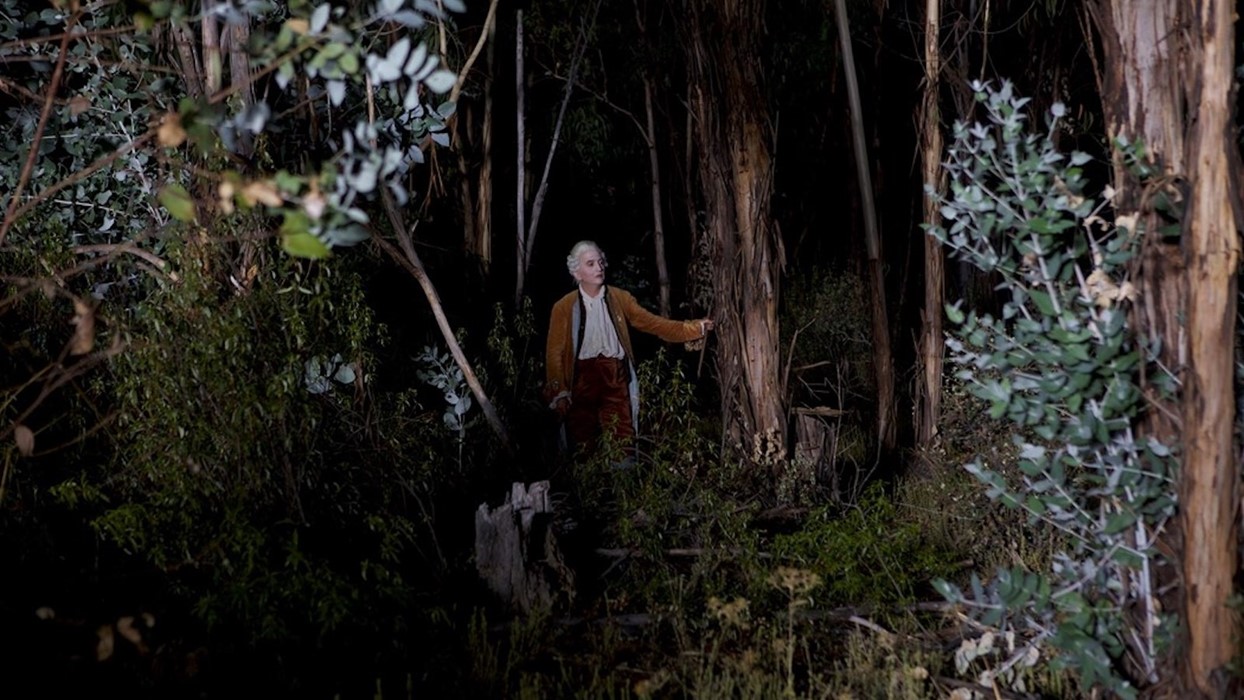
Serra has a reputation for subversion, even if he does insist that today’s art can’t measure up to the past, citing radical acts from the 1960s all the way back to the era surrounding the French Revolution, which has been a lingering obsession throughout his career. His films – which include Story of My Death, The Death of Louis XIV, and, most recently, Pacifiction (2019) – have earned him as much controversy as they have film festival acclaim. Even the press preview of the new Liberté turns slightly confrontational, with audience members questioning the director’s perceived lack of regard for the safety of his actors, who were left to dish out and endure acts such as flogging and golden showers with minimal direction during the making of the film. Did he use an intimacy coordinator, at least? “No,” he replies. He seems perplexed by the idea. “Why does that need to be mediated? Then, it [wouldn’t] be intimacy.”
Potential danger, loss of control, and forgetting one’s self-image are essential for the kind of intimacy and desire that Serra brings to the screen, he suggests. Plus, he claims that his collaborators know what they’re getting themselves in for. Just as the French aristocrats throw off their inhibitions and shed their roles in a social or political hierarchy when the moon rises over the forest, his actors spend a few weeks in a kind of “utopia” during his brief but demanding shoots, leaving their ordinary moral frameworks behind. Whether you’re convinced by this argument, or believe that it makes the power dynamics on his film sets any less problematic, is up to you.
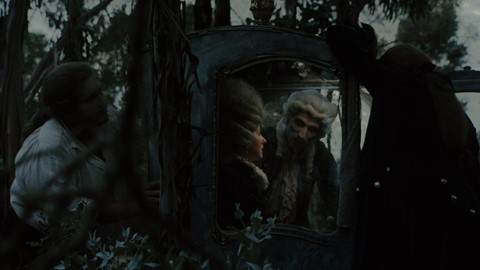
Watching an Albert Serra film, in fact, a lot is left up to you, the viewer. Many of Liberté’s most explicit scenes, for example, feel oddly un-erotic. There’s an absence of music, even, to tell us how to feel, as desire and its satisfaction are taken so far, pushed to their absolute limits, that they attain a kind of emptiness that Serra compares to the narcissistic excesses of modern social media. It’s an interesting parallel. How did the libertines reach such a state of extreme and unconventional longing? They were pushed there, perhaps, out of a desire for desire – the kind that can’t be simply and immediately sated, given an abundance of power and resources. Longing is a paradoxical emotion, after all, that fails the moment it’s fulfilled.
Today, in an era of instant gratification and serotonin boosts on-demand, it’s easy to see how this might resonate. Still, Serra resists any concrete answers. “Why do you need guidance?” he asks, when questioned on his reluctance to embed a moral stance in his films. “Think for yourself. These images, they are not part of me any more. It’s up to you what you think about them, even what you think about me. I don’t care. It’s your problem. It’s not my problem.”
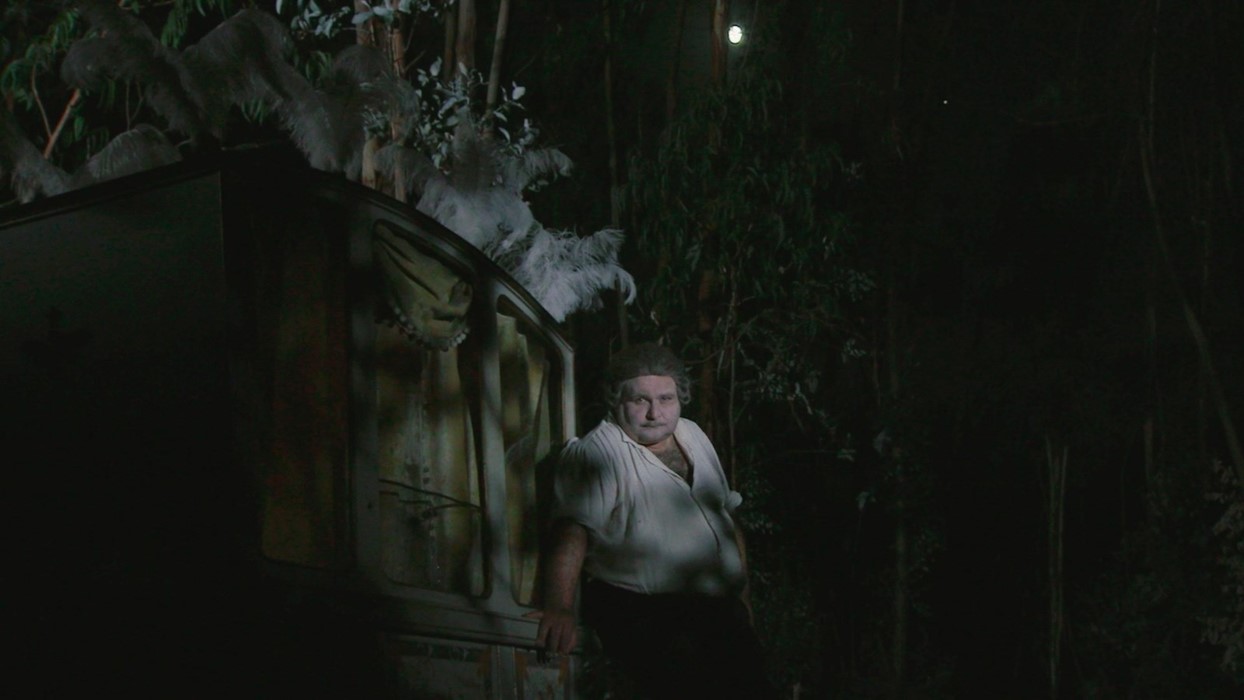
“[Darkness] has been a subject in all my films,” Serra says. “As a real thing, and as a metaphor.” In Pacifiction, it’s present in the nightlife of the French Polynesian island Tahiti. Study of My Death, meanwhile, takes place in what Serra calls “a night of civilisation,” another 18th-century reverie that anticipates the horrifying twists of European history. Darkness gives way to the dream, an “open space, where everything is possible,” he suggests, and part of the motivation behind the Liberté exhibition was to share this space with more people, to encourage them – if only temporarily – to experience a different code of morals, a different mode of perception, and a broader spectrum of desire. There is a “tricky aspect” to darkness, though, Serra admits. “It’s a pressure of the night that it will end.”
The immersive Liberté exhibition closes, like the film it’s based on, with a sunrise, and the gallery’s lights are synchronised to go up with this on-screen act of illumination. Daybreak brings the wild night to a close, but it also leaves the visitor totally exposed to their fellow viewers and voyeurs. In the real world, as on screen, Serra has crafted a moment of total vulnerability. “The day comes, and the dream is over,” he says. “The question is: how can we live permanently in this dream?” An even better question might be: would we even want to?
Liberté by Albert Serra is on show at Eye Filmmuseum in Amsterdam until 29 September 2024 alongside a film programme curated by Serra.
